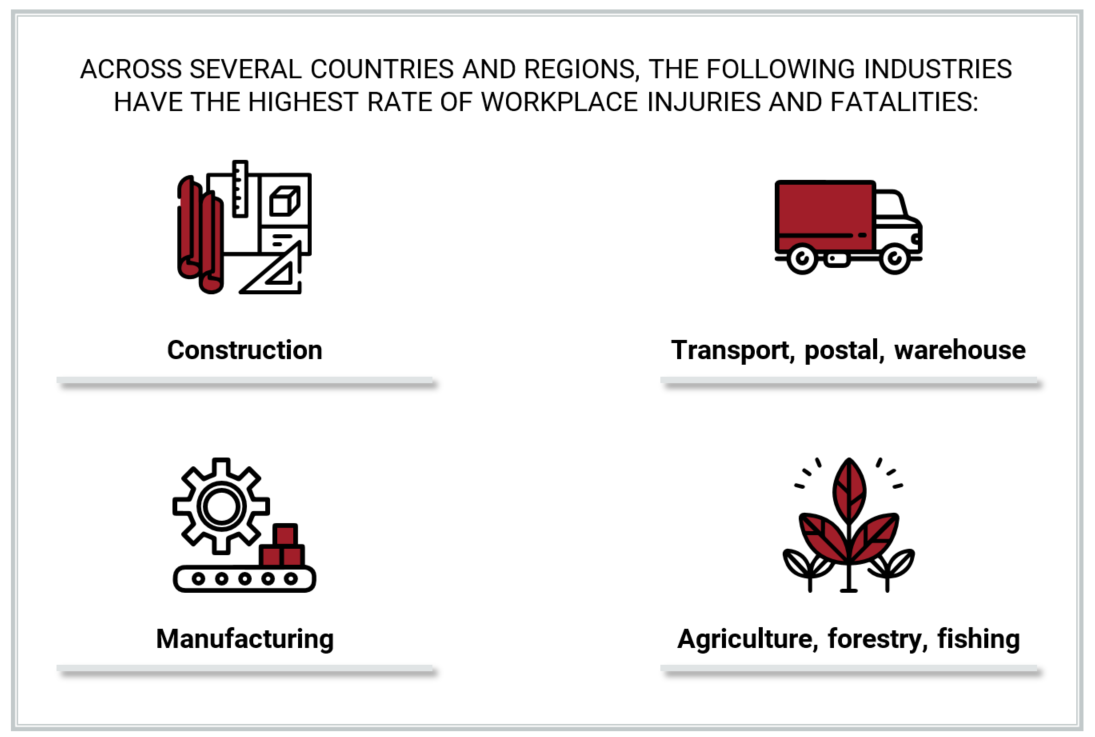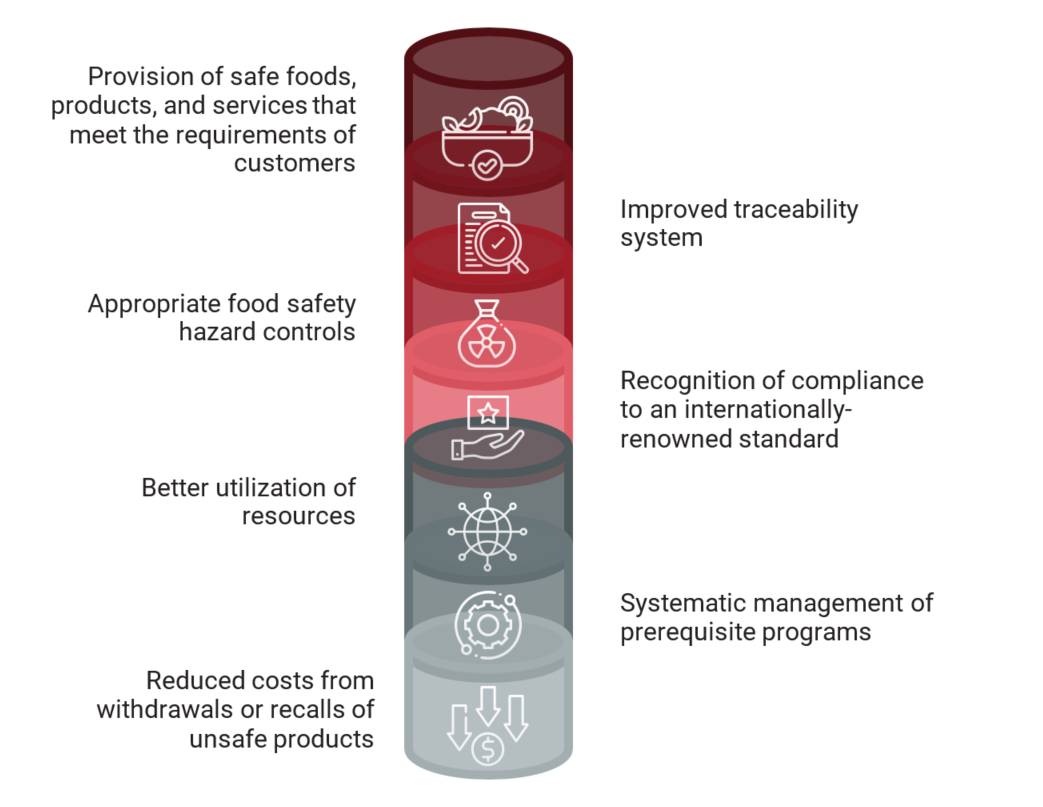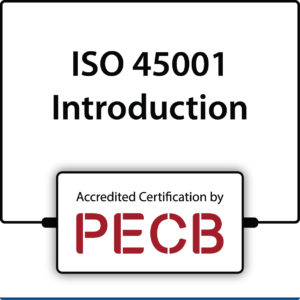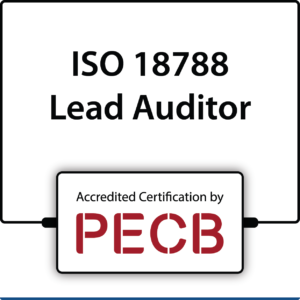HEALTH AND SAFETY
The International Labour Organization (ILO) estimates that every year, around 2.3 million workers around the world die from work-related accidents. According to ILO, every year, worldwide, there are around 340 million occupational accidents and around 160 million are victims to work-related illnesses. While in the past decades, great efforts were made to improve the health and safety of workers, there is still a lot that must be done. To tackle the issues related to the health and safety of workers, ISO has developed ISO 45001, an international standard that defines the requirements for an occupational health and safety management system (OH&S MS).

What is ISO 45001?
Based on the British standard OHSAS 18001 and other international guidelines on occupational health and safety, ISO 45001 Occupational health and safety management systems — Requirements with guidance for use specifies the requirements for an OH&S MS. By establishing an effective OH&S MS based on this standard, organizations provide safer and healthier work environments.
ISO 45001 is applicable to organizations of all sizes and industries that seek to prevent work-related injuries, diseases, and deaths and promotes the establishment of safe working environments and the continual improvement of occupational health and safety performance.
ISO 45001 shares the High-Level Structure (HLS) similar to other ISO management system standards like ISO 9001 for quality management and ISO 14001 for environmental management which allows organizations to easily integrate two or more management systems. Since its publication in 2018, ISO 45001 replaced the British standard OHSAS 18001.
Why is OH&S MS important for you?
Due to the high number of occupational accidents and deaths, better and more effective practices which guarantee the health and safety of workers in the workplace is a necessity. To mitigate the risk and hazards in the workplace, organizations must prioritize the health and safety of their employees.
Organizations and individuals operating in any industry must collaborate to achieve the same goal, which is to reduce as much as possible the number of accidents that lead to injury or health-related issues.
Attending a PECB ISO 45001 training course, be it Foundation, Lead Auditor, or Lead Implementer, will enable you to comprehend internationally recognized practices that are intended to improve the working conditions and guarantee the well-being of employees. Furthermore, you will earn a globally recognized certificate on occupational health and safety management, which will demonstrate that you are capable to understand, implement or audit health and safety policies, controls, and processes to reduce work-related injuries.
Why set guidelines and procedures for OH&S?
There is no doubt that poor occupational health and safety practices bring enormous emotional distress, human costs, and economic burden. Therefore, organizations should employ a systematic approach to OH&S management.
Health and safety guidelines and procedures will help organizations to:
- Prevent illnesses and injuries in the workplace: OH&S guidelines and procedures aim to promote health and safety in the workplace and protect workers from risks and hazards related to their health, safety, and well-being. The implementation of such guidelines and procedures contributes to the reduction of work-related illnesses and injuries.
- Reduce health and safety hazards and risks
Organizations use different equipment and tools to do their work. As such, proper usage and personal care when working with organizational equipment is essential. Detailed guidelines and concise procedures for equipment use will enable organizations to reduce the health and safety hazards and risks in the workplace.
- Prevent unwanted consequences
Well-constructed guidelines and procedures will help both workers and organizations to prevent the negative consequences of health and safety risks and hazards.
Benefits of ISO 45001 for organizations
An effective OH&S MS based on ISO 45001 has the potential to shape and improve an organization’s way of working and can make the workplace a safer and better place.
Some of the benefits that organizations would gain by implementing an OH&S MS based on ISO 45001 include, but are not limited to:
- Enhanced reputation among internationally recognized businesses as a result of implementing the best practices of occupational health and safety
- Increased trust of employees by demonstrating that the organization is committed to improve their safety and health in the workplace
- Reduced insurance premiums and claims
- Increased return on investment due to improved staff productivity, while the injuries within the workplace will be reduced
- Reduced employee turnover because the main focus will be in the mental and physical well-being of the employees
How do I get started?
Seize the opportunity to become certified with PECB’s ISO 45001 training courses now, and we will make sure that our experts assist you throughout the entire process in order to offer you a worthwhile experience and welcome you to our global network.
Click here to begin with the first step!
PECB Certified ISO 45001 available training courses
Develop your professional career on occupational health and safety management by participating in our ISO 45001 training courses. Check the training courses below and find the one that suits you best.
In the 20th century, humanity saw unprecedented socio-economic changes as well as scientific and technological advances. These factors impacted, among others, how food is produced, processed, and marketed: countries enacted food safety laws, companies began to use scientific methods to make food safer, technology allowed better packaging and quality assurance, and public awareness increased dramatically. Overall, food became safer and more nutritious.
Yet, in the 21st century many challenges remain. According to WHO estimates, 600 million people become sick and 420,000 die each year from unsafe food. Globalization and complex supply chains make controls and traceability more difficult. Climate change is likely to present direct and indirect challenges to food safety. In all of this, food producers will have to overcome new challenges and meet new expectations. However, they are not alone: ISO 22000 is here to help them fulfill their responsibility of ensuring the safety of their products and the well-being of their consumers.
A food safety management system (FSMS) based on ISO 22000 not only can improve a food producer’s measures against foodborne illnesses and diseases, it can also improve their credibility and increase customer awareness on food safety.
What is ISO 22000?
ISO 22000 is an international standard that specifies requirements for a food safety management system. An FSMS based on ISO 22000 gives food producers a structured approach and necessary mechanisms to manage the safety of their products and services. As part of the FSMS, ISO 22000 requires the establishment of effective communication with interested parties, implementing a risk-based approach, establishing and maintaining prerequisite programs, hazard control plans (OPRPs and CCPs), monitoring the performance of FSMS and food safety, and seeking and realizing continual improvement opportunities.
ISO 22000 adopts a process approach which integrates the plan-do-check-act (PDCA) cycle and risk-based thinking at organizational and operational levels. Organizations seeking to implement an FSMS based on ISO 22000 must establish a food safety policy and set the food safety objectives. The policy and objectives must be established by the top management, and a traceability system should be implemented to trace the products through the supply chain.
The requirements of ISO 22000 are generic and applicable to all organizations in the food chain, regardless of their size or complexity. ISO 22000 is developed according to the High-Level Structure (HLS), as such it is aligned with other ISO management system standards. This allows organizations to integrate an FSMS with other management systems such as a QMS based on ISO 9001, an EMS based on ISO 14001, etc. In addition, ISO 22000 encourages organizations to align with other guidelines, specifications, or requirements related to food safety or to specific food sectors which can further contribute to achieve the food safety objectives.
Benefits of ISO 22000 for food producers
The implementation of an FSMS can be highly beneficial for food producers that seek to improve their food safety performance. It ensures the application of adequate controls and procedures to ensure food safety.
An effective FSMS based on ISO 22000

Why is ISO 22000 important for you?
As the companies in the food industry prepare to face the challenges of the 21st century, they will need mechanisms that ensure the safety of their products and services, and they will have to maintain and improve customer satisfaction and confidence. As such, these companies need competent individuals with proven credentials to establish, implement, audit, and maintain measures that ensure food safety.
An ISO 22000 certificate ensures a formal and independent recognition of your professional competences. PECB training courses are designed to enhance your knowledge and comprehension of ISO 22000 requirements and best practices of food safety. Specifically, our ISO 22000 Lead Implementer training course enables you to help, support, and guide organizations to establish, implement, maintain, and continually improve an FSMS based on ISO 22000. Our ISO 22000 Lead Auditor training course acquaints you with an auditing approach that is based on internationally recognized standards and good practices.
Why choose PECB for an ISO 22000 certification?
By successfully completing a PECB ISO 22000 training course and obtaining a certification, among others, you will be able to:
- Comprehend the main concepts and principles of food safety management
- Support and guide organizations in improving their general performance in food safety
- Understand the best practices and adequate controls necessary in the food chain
- Help organizations prevent and reduce the risks of contaminants in their products and work environment
- Help organizations establish a traceability system
- Support organizations in creating and protecting value
- Help organizations gain competitive advantage
- Determine whether an organization’s FSMS conforms to ISO 22000 requirements
- Enable organizations achieve their food safety objectives
How do I get started?
We at PECB are excited to welcome you to our global network. We will assist you throughout the entire process in order to offer you a worthwhile experience.
Click here to begin with the first step!
PECB Certified ISO 22000 available training courses
Enhance your knowledge and expertise on food safety management by participating in our ISO 22000 training courses. Check the training courses below and find the one that suits you best.
What is ISO 18788?
Why is Security Operations Management System important for you?
Benefits of ISO 18788 Security Operations Management System
- Provide reliability and establish effective Corporate Governance
- Strengthen credibility and protect reputation
- Ensure the quality and professionalism of security organizations
- Establish sustained customer improvements
- Provide confidence to customers, governments and communities
- Increase the potential of operational success
How do I get started with ISO 18788 Trainings?
PECB Certified ISO 18788 training courses available
For additional information, please contact us at info@isotrainings.in








